- Author Jason Gerald [email protected].
- Public 2024-01-19 22:11.
- Last modified 2025-01-23 12:04.
Fragrant, wrinkled sweet peas give any garden a whimsical touch. Sweet pea has curly tendrils that allow it to climb over fences and trellises, creating a magical feel. Sweet peas are easy to grow in many climates with sufficient preparation for the growing season. See Step 1 to learn how to grow these attractive flowers.
Step
Part 1 of 3: Getting Started with Sweet pea Seeds
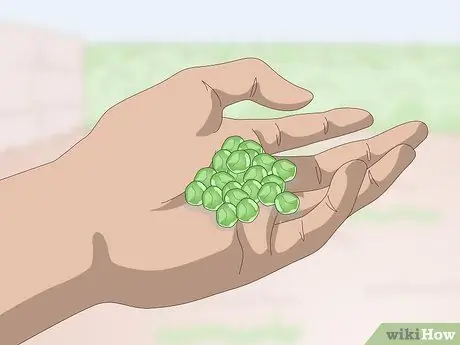
Step 1. Buy sweet pea seeds
Sweet peas usually start from seeds. You can plant them in seed trays indoors and later transplant them into the ground in the garden, or start planting outside. The seeds are available at garden supply stores. For rarer breeds, look for online retailers.
- "Ancient" sweet peas will produce very fragrant flowers.
- Spencer types have bright colors, but less fragrant. You can get pink, purple, blue, white and red flowers of this type.
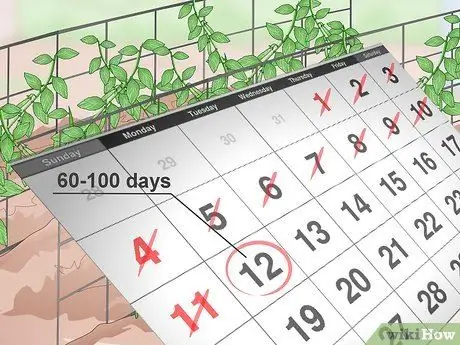
Step 2. Decide where to start planting your seeds
Sweet peas can be grown in any growing zone, but it's important to know the right time to be ready. Seeds should be planted as early as possible to produce a strong root system and survive the summer. therefore, starting to plant seeds early in the year is usually the best option.
- If you live in a temperate climate where the soil doesn't freeze in winter, you can plant seeds directly in the ground as early as November, although waiting until January or February is also fine. Make sure to water during the winter, and the flowers will appear in the spring.
- If you live in an area where winters are cold, starting to grow seeds indoors is the best option. That way the shoots will be ready to plant in the ground after the first frost has passed. If you wait too long to plant your seeds, they won't have enough time to get used to the soil before the summer heat gets hot.
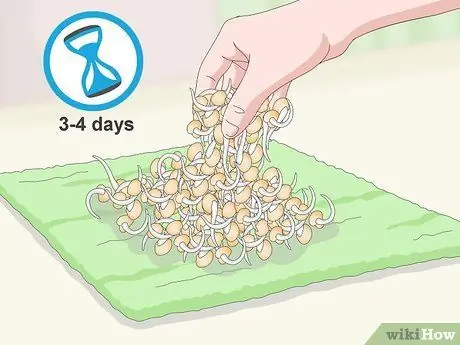
Step 3. Soak or scrape your seeds
Sweet pea seeds have the best chance of sprouting if you help penetrate the seed coat before planting. You can do this by soaking the seeds in a pot of water overnight, or by using a small knife or nail clipper, scraping the surface of each seed.
If you're soaking seeds, plant only those seeds that swell after soaking overnight, removing any seeds that haven't changed in size
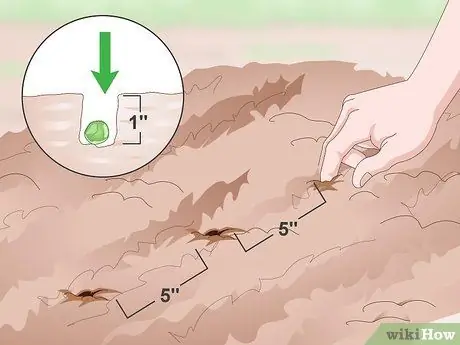
Step 4. Plant the seeds in the seed substrate
About 5 weeks after the last frost (usually mid-February), prepare a small seed tray or peat container with planting medium for seeds. Plant the seeds 2.5 cm deep and 7.5 cm apart from each other, or one seed apart.
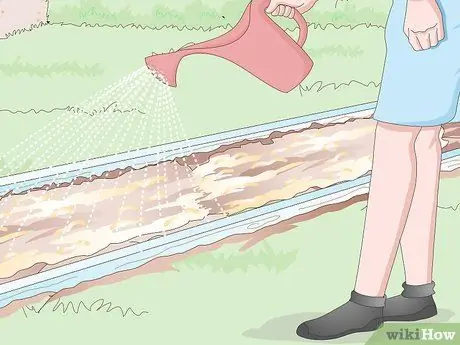
Step 5. Keep it moist and warm
Water the seed tray and cover tightly with plastic wrap for about the first week, to maintain temperature. Store in a greenhouse or near a sunny window where the temperature will not drop below 21 degrees Celsius. Once the shoots appear, remove the cover and keep it moist and warm until it's time to plant in the soil after the last frost.
- If you are using a seed tray, spread the shoots 7.5 cm apart from each other when the leaves are emerging.
- Pinch flowers or flower buds before transplanting, so that the plant's energy can be directed towards the growth of new roots.
Part 2 of 3: Growing Sweet Peas
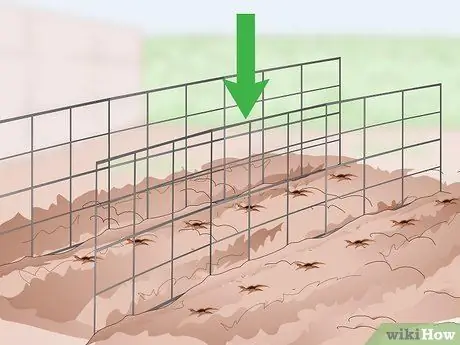
Step 1. Choose a spot with full sun in your yard or garden
All types of sweet peas grow in sunny areas, making them excellent choices for visible parts of fences and walls. In the heat of summer, sweet peas do well in partial shade, but it's best to find a spot that gets lots of sun to be on the safe side. Since sweet peas love to climb, find a place that allows them to grow upwards into the sky. The plants have tendrils that will tie themselves to any post when you plant them near them.
- Sweet peas will make a great natural decoration for a fence. If you have a picket fence or chain link fence that you want to decorate, just plant sweet peas there.
- Sweet peas often grow on trellises or arches. This is another beautiful option, and will give your garden a rustic feel.
- If you don't have a suitable place for sweet peas, stick some bamboo poles in your garden and plant sweet peas there. This will give your garden height and a touch of interest and plant sweet peas there. You can also build a tower stake in a pot or a small pergola.
- You can plant sweet peas among other plants, such as shrubs or vegetables.
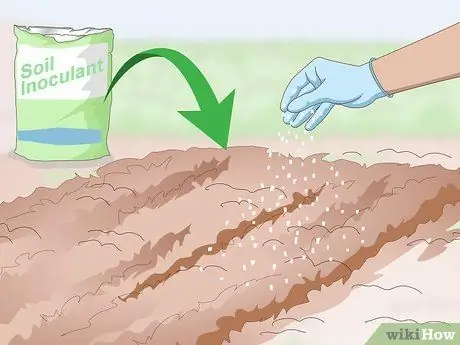
Step 2. Enrich the soil
Sweet peas grow best in rich soil with good drainage. Prepare the soil for planting by loosening it to a depth of 15 cm and mixing in compost or manure. This is especially important if your soil contains a lot of clay; You will need to add more compost to ensure it reaches the sweet pea roots.
- To determine sufficient soil drainage, monitor the soil after heavy rains. If the water is stagnant and it takes time to dry, it means the soil is not well draining. if the water dries immediately, the soil is good for your plants.
- Using soil for planting that is higher than the surrounding soil surface is a good choice if you feel your soil contains too much clay to support plant growth, it will also be useful for other crops you want to grow.
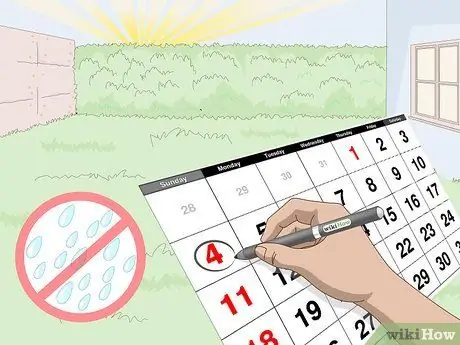
Step 3. Plant sweet peas in early spring
Whether you want to start planting seeds indoors or sprouting outdoors, or you want to plant seeds directly in the garden, early spring is a great time to do so. If you live in a warm area where the soil never freezes, you can plant it in January or February. If you live in an area where the soil can freeze, wait until the first frost has passed, in early or mid-April.

Step 4. Dig the holes for the sweet peas
When you are transplanting shoots, dig holes 12.5 cm apart from each other and deep enough to set the shoot root ball in the soil. Gently press fresh soil around the plant stalk. For seeds that you plant directly in the ground, dig holes 2.5 cm deep and 7.5 cm apart, so that each plant has room to grow.
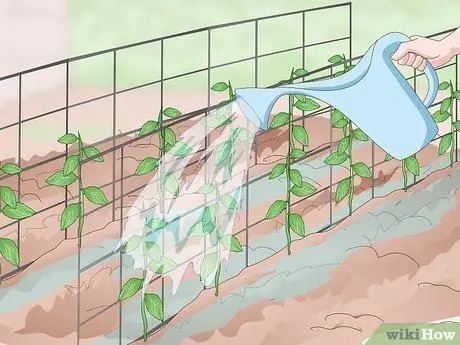
Step 5. Drizzle the sweet peas
Finish by watering the plant with sufficient fresh water. Sweet peas will start to appear when the weather starts to warm up.
Part 3 of 3: Keeping Sweet Peas

Step 1. Water frequently during hot months
Sweet peas should be well cared for and kept moist during the summer. Flush with a little water every time it doesn't rain. Check the soil around the sweet pea stalks to make sure the soil is not drying out.
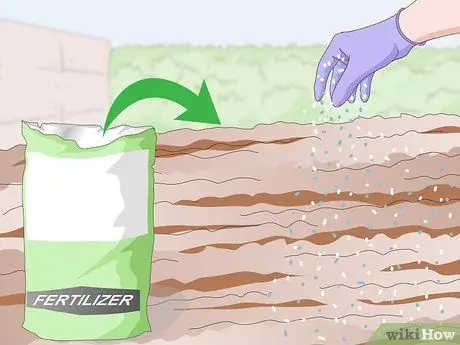
Step 2. Fertilize once a month
Sweet peas are quite productive, and a monthly application of light fertilizer will keep the plant in bloom for weeks. It's not necessary, but it will help if you want your plant to flower at its full potential. Use compost, manure, or commercial fertilizers with a high potassium content.

Step 3. Harvest flowers regularly
Cutting flowers encourages growth, so feel free to gift a bunch of fresh flowers to your friend. Wait for the flowers to reach their peak of fragrance and color diversity before cutting. You should also remove wilted flowers, which absorb energy from the plant and prevent new flowers from growing.
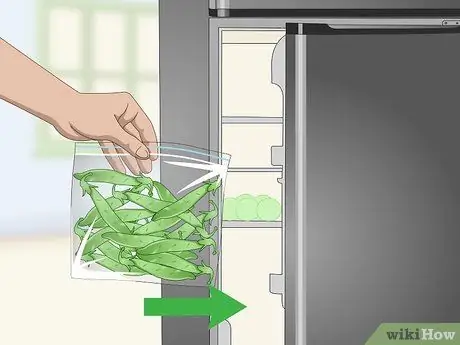
Step 4. Save the seed bags from your plants for next year's harvest
This once-a-year plant won't come back on its own next year, but you can enjoy it again if you save a bag of seeds and plant them again in winter or spring, depending on where you live.

Step 5. Cut off the tips of the plants once they are 9 cm or more in height
This cutting will stimulate new growth in the form of new branches and flowers. Just use your fingernails to trim the ends of the plants.






